Local SEO 101: How To Rank Higher On Google (2023 Guide)
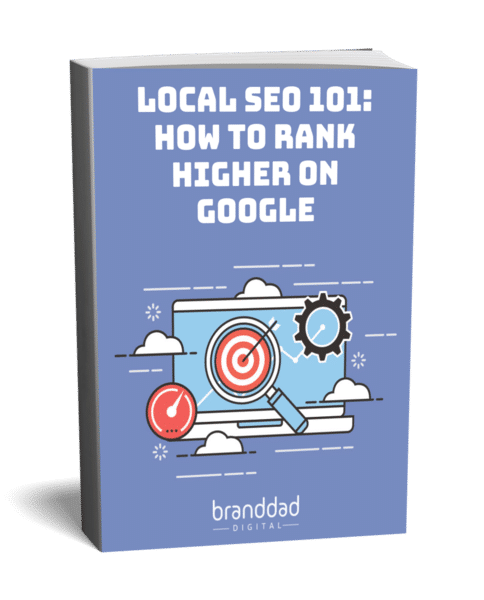
Download Your Free Copy Of The Local SEO 101 Guide To Learn How To Begin Your Path To Local Market Domination


About This Guide
You can’t learn how to master Local SEO, rank your business higher on Google, increase your online visibility, and increase your organic growth without first understanding what SEO is and how it works.
This guide will help you learn how search engine optimization (SEO) works, so you can firmly believe in its power to maximize your digital presence. This guide will show you what items need to be considered for you to successfully increase your Google rankings, Bing rankings, and Yahoo search engine rankings and begin your path to organic growth and visibility.
SEO has many different aspects, and we’ll help identify them here for you. We recommend reading through the guide and then going through each part separately to understand how each one works and can be improved in your own business.
The world of SEO is complex, but if you know the basics, you’ll be in a much better position for success. As a top-rated, Rockford SEO agency, we wrote this in-depth guide to help you on your path to local market domination.
Local SEO 101: How To Rank Higher On Google (2023 Guide)
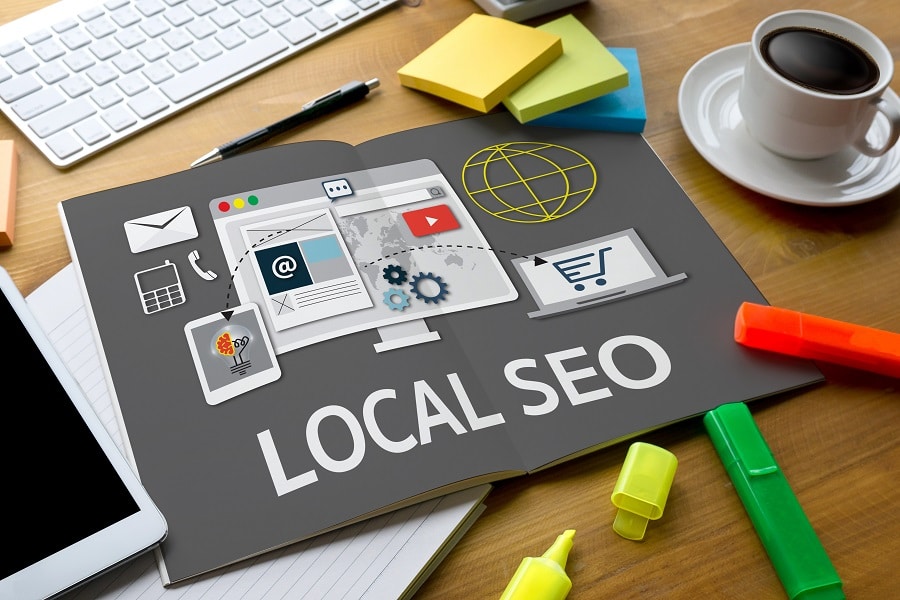
When someone wants to search for a dentist, restaurant, or other business near them, they usually go to Google. You probably have done this yourself with something like, “Mexican restaurants near me”.
You and millions of other people trust Google to give them the information they need to go about their day. Now, let’s switch gears and think of the business owner.
If a business owner doesn’t have an active presence online, Google will not be able to promote them to users. This means a lot of lost business to competitors.
Having an active presence online includes having an attractive, functional and optimized website.
It means generating content that is informative to consumers. It also means building a relationship and reputation with consumers on platforms such as Yelp, Facebook, and Google My Business, to name a few.
Doing all of this work online will help your success offline as a local business owner as well. If you’re looking to grow your business organically and top local rankings, this is the guide for you. And if you’re looking for a team to do it for you, our Spring Hill SEO team is here to help.
Now, let’s get started on how it all works.
What Is Search Engine Optimization?
Search Engine Optimization, otherwise known as SEO, is the practice of increasing website traffic by boosting the exposure of your brand organically on search engines.
Search engines like Google and Bing have an intelligent system to show relevant websites to users who search for specific keyword phrases.
Keyword phrases are what people type into the search bar. For instance, “fast food restaurants near me” is a keyword phrase. The results of that search are a list of restaurants and other websites relevant to that keyword phrase.
Your local search ranking is based on many factors but distance, relevance, and prominence in relation to the search query are three factors that will make a significant difference in where your business ranks locally.
It’s also not just your website that may show up in search results. While it could be your main website, it could also be an article you authored elsewhere, an online directory such as Yelp that features your business, and often your Google Maps and Google My Business listing.
While your website will play a major role when it comes to Google’s local search results, a Google My Business listing will also be an extremely important and prevalent source of traffic for the majority of local businesses.
Google My Business listings (as shown on the right hand side of the following image) feature reviews, directions, contact info, business info, and more all in one location directly in the search results, but we’ll get more into that in a little bit.
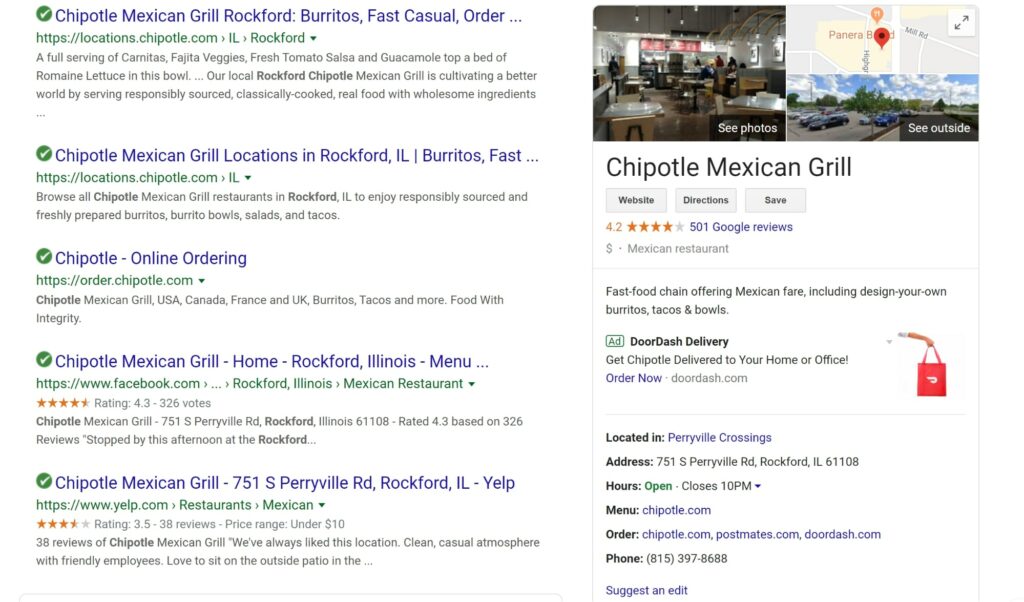
How Search Engines Work
Search engines have created programs, also known as bots to crawl every single website online. As the bots crawl a website, they collect information from it. The information it collects has a lot to do with whether or not the search engine will show it to users.
To put matters simply, Google and Bing run a business. Their business is to meet the needs of their users. Those users want information that websites provide so to keep users happy, the search engines must produce results that will satisfy them.
As bots crawl websites, they take notice of everything from website speed, layout, quality, and information provided. The faster, more user-friendly, and informative websites are the ones that are shown to users in order to generate the greatest user experience.
If you’re using tools like Google Search Console, you can see which pages of your website Google has indexed, how they look to Google on mobile, and even issues with the pages as seen by Google.
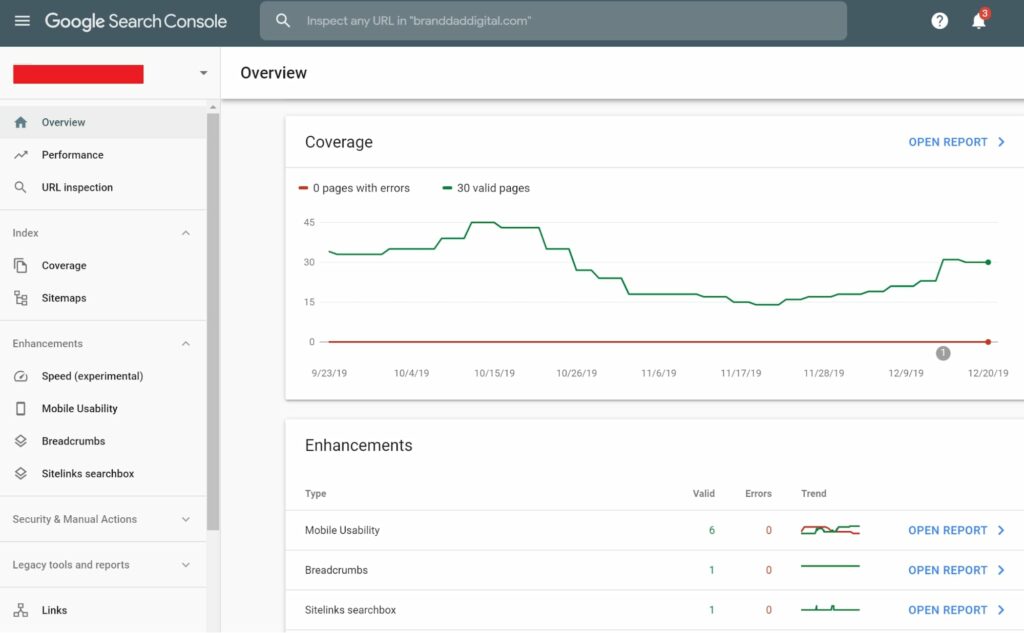
If a web page has incorrect or inconsistent information, a slow page speed, deceptive anchor text, irrelevant content, or is not mobile friendly, Google will typically penalize those sites knowing they aren’t providing the best user experience available.
How SEO Meets the Needs of Search Engine Users
SEO guides website owners through what they need to do to ensure their site provides what search engines are looking for. This includes ensuring the website functions optimally and provides valuable content to them.
What can become complicated is the way the website must be developed for the search engine bots to understand how valuable it is to search engine users.
Bots are programs, not human beings. These bots are looking for specific variables on the website, and if those variables are missing, they will not rank the website highly on the search engine results pages (SERPs).
For example, a local business’s NAP (name, address, and phone number) plays a critical role on search results and Google Maps alike.
If the bots discover a local business has an inconsistent NAP across the internet, how will they know which address, business name, or phone number to display?
Not much can provide a worse user experience than Google providing a user an address and directions on Google Maps only for that person to drive to that address and find out the business is no longer there.
This could cause someone to no longer trust Google Local, whether it be maps or search engine results pages. Obviously, Google would want to avoid this and provide correct info to that user to retain their trust and business, so they’d therefore rank a business with inconsistent info lower than one with consistent, correct info.
Free Download: Local SEO 101 Ebook
Keyword Research
The exact ranking factors bots use are unknown. Due to website owners in the past (and present) attempting to outsmart the bots to rank over better websites, search engines do not divulge specifics about their algorithms.
However, through trial and error, educated guesses, and proper testing and measuring, SEO communities and internet enthusiasts have come up with a large number of factors that have been proven to directly impact rankings, with proper keyword research and usage being one of the most impactful.
Certain ranking factors are more prominent than others but algorithms are always changing and being updated as the search engines get smarter and smarter, therefore, no one will ever know 100% of factors used in rankings.
What we do know is the bots are reading content on a website to relate in the best way possible with the inquiries users are inputting into the search bar. The best way to find out what people are searching for on a search engine is to perform keyword research.
Many tools exist that help people find keyword phrases. Some of the most popular ones are Google Keyword Planner (a free tool offered by Google), as well as SEMRush and Ahrefs (paid tools offering much more than just keyword research).
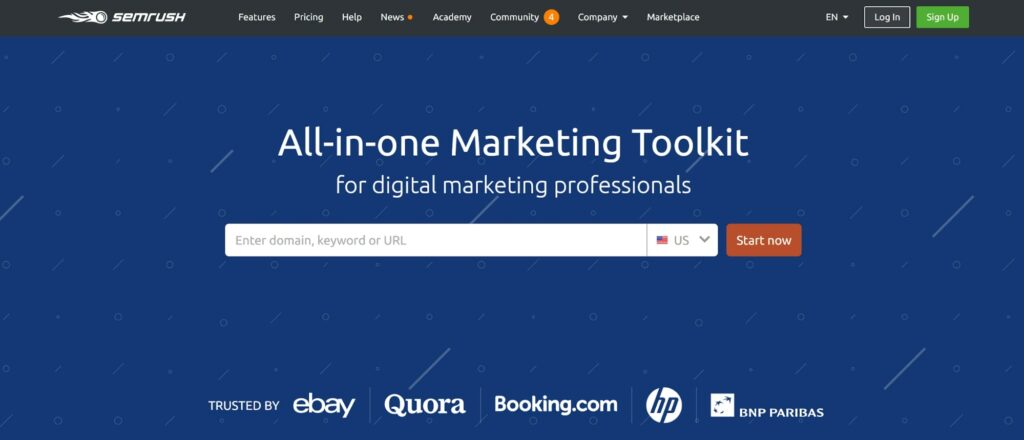
When conducting keyword research, it’s important to think about what types of search terms people are actually typing in Google. For instance, if someone is looking to shop their insurance, they don’t typically just type “insurance” in the search bar but more likely something along the lines of “company with the lowest insurance rates” or “get auto insurance quotes”.
Phrases like this are known as long-tail keywords. These are much better for smaller businesses to try and rank for because if you tried to rank just for the word “insurance”, you’d be far outnumbered by large corporations whereas the difficulty of ranking for a 4 or 5 word phrase would be much less difficult.
Local consumers typically search for keyword phrases using geographical search words. Using the insurance topic again, they may search for “insurance agencies near me”. If you’re a local business, establishing geographic relevance and prominence online will help ensure those searches pop up your name.
It’s also important to research words related to the services and products on the site, known as Latent Semantic Index(ing) Keywords, or LSI Keywords for short.
The results provide phrases people are using related to those words. For instance, if you were writing an article on Chicago, keywords such as Navy Pier, windy city, and Cubs could all be LSI keywords, since they’re related to the primary article keyword of Chicago.
Keyword research tools provide two important pieces of information to make selecting the right keyword phrases easier – monthly search volume and competition.
When a site is first developed, it doesn’t have enough credit to rank for highly competitive keyword phrases.
However, it builds credit by starting with low competition keyword phrases. As the site ranks for those, it can be easier to rank for ones that are much more competitive.
The best way to rank for keyword phrases that will help you rank higher on Google, is to generate high quality content based on those keywords and be sure it provides an informative and superior experience to the existing content on that subject.
Thorough and proper keyword research will not only help you when it comes to SEO and ranking higher on search engines, but it will help in all of your social media and content marketing efforts as well.
Search engines want to satisfy their users. If your site satisfies its users by supplying superior content and experience, the search engines will show it to more of them.
Website Design and Architecture
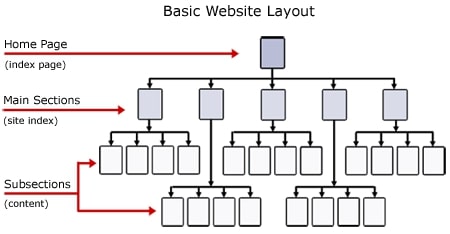
“Content is king.” This phrase was first used in an essay by Bill Gates in 1996. SEO and Internet marketers have adopted this phrase since then to highlight the importance of producing high-quality content for website users.
Fortunately, content isn’t the only way to rank a website highly on SERPs so if you were already dreading producing content, you can relax a little bit.
Anyone who has ever been on a slow website or one that doesn’t function well knows the frustration of it.
Internet users want to find information on a website as quickly and easily as possible. Any website issues that come in between users finding what they want downgrades the value of the site, even if it has high-quality content.
When developing a website, it must first be attractive and then function well. To go further than that, we’ve also written a blog article titled “9 Must-Haves For An Effective Business Website“.
Internet users decide in two seconds whether they want to stay on the site to find what they need. That decision is based on how easy it is on the eyes.
Images and text that are big, bold, and simple please people much more than busy, unrelated images and light text on a light background.
After satisfactory website design, site architecture comes into play. This is the way the website is set up to present information to its users.
Most websites now have the main navigation at the top of the page. This makes it easy for users to find what they are looking for on the site.
When the categories at the top of the page are clear and easy to navigate, users can quickly go to the page they need.
For instance, imagine a dog owner looking for a new collar. A user may see the following categories at the top of the pet supplies website:
HOME – ABOUT US – PRODUCTS – CONTACT
The user immediately sees PRODUCTS. Since there aren’t many other options that make sense, it’s easily identifiable as being the category that may have a page for collars.
When the user hovers over PRODUCTS, a drop-down menu may appear. This drop-down menu may reveal:
LEASHES >> COLLARS >> FOOD
The user clicks on COLLARS and sees all of the collars the business currently has in stock.
The above example is what the experience should be like for website users. The site architecture is simple and easy to use, allowing people to find what they need quickly and easily.
An example of a site architecture that does not satisfy its users is as follows:
HOME >> ABOUT US >> LOCATIONS >> SERVICES >> ACCESSORIES >> PRODUCTS >> CATALOG >> CONTACT
Most users when looking at this main navigation will automatically become overwhelmed. After scanning the multiple categories, they may not be sure if they should hover or click on ACCESSORIES or PRODUCTS or CATALOG.
Hovering over ACCESSORIES reveals a long list of many different types of accessories, and hovering over PRODUCTS drops a list of many different products.
At a quick glance, collars are nowhere on the list, so users leave the site.
From the above, it’s easy to see that site architecture must be:
- Easy to follow
- Simple
- Lead users to what they need with as few clicks as possible
Not only are we experienced Rockford SEO experts, but we also are a top-rated Rockford Website Design Agency as well so we know a thing or two about coinciding web design and seo.
Website Speed
We live in a fast-paced world and your website speed should reflect that. Not only do people want to find the information they need easily and quickly, but they want it presented to them immediately.
Website speed, an aspect of “technical SEO”, depends on a number of factors ranging from the type of web hosting and servers used, number of images/videos used and whether they’ve been compressed, the amount of unnecessary code on a website, and much more.
You can find out your website’s speed scores and issues using the popular GTmetrix or Google Page Speed Insights.
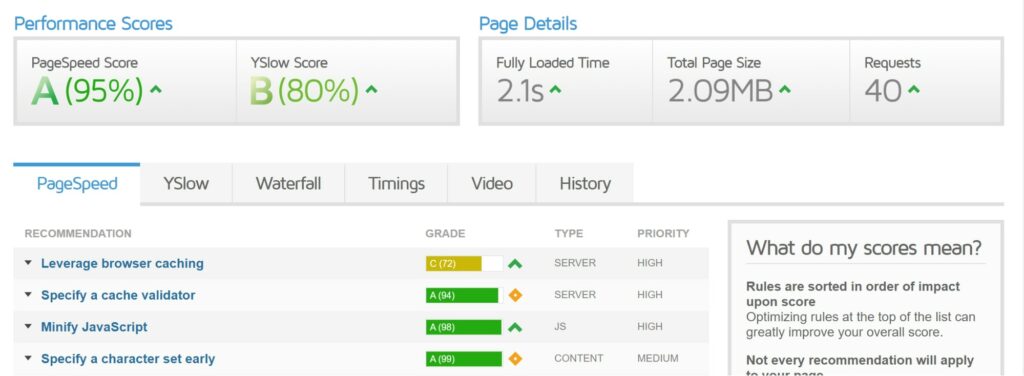
The features and functions available for websites are at an all-time high and growing constantly. However, with those additional features and functions comes an increase in items to load when someone visits your website.
Waiting on a website to load makes Internet users irritated, and that feeling decreases the motivation to purchase products on the site or seek out the business for services.
When it comes to the speed of a website, there are two considerations: desktop and mobile. People using mobile devices are at an all-time high, especially when it comes to searching local businesses.
In 2013, only 27% of searches were performed on a mobile device. In 2018, 57% of searches were performed on a mobile device. This means it’s important to make sure the site loads quickly on both desktop and mobile devices.
Since mobile devices can’t render desktop sites the same way, business owners must ensure their site is mobile-friendly. A website that isn’t designed to be mobile-friendly can be very clunky and provide an overall awful user experience.
Further, not all desktop site functions work on mobile devices. A mobile-friendly site responds to mobile devices in a way that shows all of its contents on the smaller screen, although slightly different than desktop, but still provides the same overall user experience.
An attractive, fast-loading, mobile-friendly, and easy-to-use website builds the foundation for effective SEO as well as user-experience and customer conversions. At BrandDad Digital, these features come as a standard with our website design services.
The next stage in increasing your local ranking is on-page optimization.
Free Download: Local SEO 101 Ebook
On-Page Optimization
Each page of a website must be optimized according to what it is providing users. This doesn’t just mean adding content to the page that includes keyword phrases people are searching for when looking for your services and products. It means setting the page up with the technical and non-technical SEO aspects, such as:
- Title Tag
- Meta Description
- Schema Markup
- Blog Content
- Content Headers
- Image Alt-Text
- Internal Linking
- External Linking
Each one of these is valuable in optimizing a website for what it should be ranked in the SERPs.
Some of these SEO aspects may be too technically involved for some, but with the help of certain WordPress plugins like RankMath SEO or Yoast, they’re easily manageable. We recommend hiring experts though, like us at BrandDad Digital, as all the above factors will make a major impact on your SERP rankings.
Title Tag
The title tag is what people see in SERPs. It is the high-level title or description of the page.
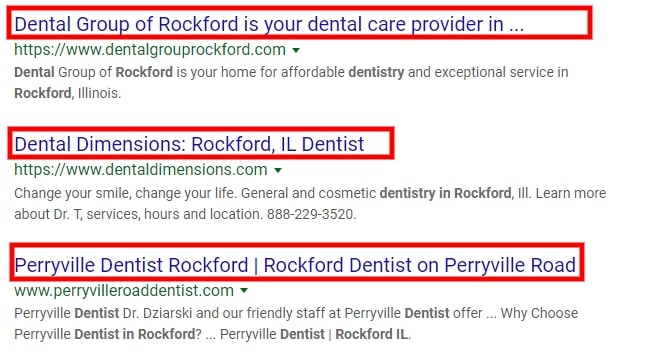
These are examples of title tags.
As you can see, the first one has not been optimized or the title tag created was too long and therefore truncated by Google. The title tag must be between 50 and 60 characters long, or it will be cut off by Google to fit on the SERPs.
When a website doesn’t have the title tag identified, Google will pull from the content on the site to make a title tag.
The second example has been optimized. It uses “Rockford, IL Dentist” as the keyword phrase.
Geo-tags are important when serving local consumers.
The last one has also been optimized, but not well. Title tags should make sense.
In everything from their business and domain name to their title tag and meta description, they’ve used what’s known as “keyword stuffing” with repeated use of Perryville, Dentist, & Rockford, to the point where it doesn’t even make sense.
This is done in an effort to show up in more search results for certain keywords and while they may see a quick boost in certain rankings, it’s often very short-lived and then penalized and can easily hurt the business and domain long-term since it comes across as spam, and Google hates spam.
Meta Description
A meta description is the description of the page visible on the SERPs. It is located right below the title tag.
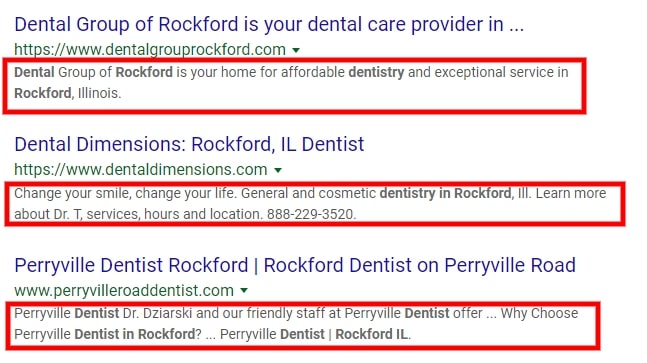
As seen in the above examples, the first result shows a concise meta description providing searchers the relevant information. However, it is not as optimized as it could be for keyword phrases.
The second one also has a clear meta description, but it’s also optimized for “dentistry in Rockford”.
The last example did not have a meta description written for it or the one they did create was overridden by Google, so Google likely pulled information from the page to describe it.
Meta descriptions should be 155 characters, or they’ll be truncated by search engines to fit in the space provided on the SERPs.
Schema Markup
Schema markup is code you put on your website to provide Google with details about the information on your site. This helps the Googlebot better understand info to display to users about your website or company.
Local businesses can use schema markup to display information in the SERPs about specific events, as seen in this example:

Schema markup can be used for the following:
- Articles
- Local Businesses
- Restaurants
- TV Episodes and Ratings
- Book Reviews
- Movies
- Software Applications
- Events
- Products
Google encourages website owners to use schema markup, so they created a tool to develop the HTML code to place on the page of the site – Structured Data Markup Helper.
The HTML code is placed on the page the schema markup was created for, and each page may have one.
This helps provide searchers more information about your business or website such as ratings, FAQ’s, services, etc., therefore improving the likelihood of increasing your click-through-rate.
Blog Content
Google wants a site to regularly provide Internet users with quality content. Sites that do so bring in more targeted traffic, leads, and sales.
The more quality content that can be added to the site, the better it will perform. Always remember though that it must be highly valuable to site users or it can downgrade the authority of the site.
While blog posts can be promotional in nature, they shouldn’t always be about the services, products or business. It should solve problems and offer information that users who would be interested in the services and products, otherwise known as your business’s buyer personas, would want to know.
For instance, an HVAC business may post a problem-solving blog about “What It Means When the Air Conditioner Doesn’t Blow Cold Air” and then lead readers to call them. This will be much more effective than a self-promotional topic of “A1 HVAC Is the Best” and will also help establish a level of trust and expertise.
While blog content serves as a way to relay information, it also begins building a relationship with consumers. This is what turns consumers into buyers.
For another good resource, be sure to check out the article How To Write Irresistible SEO Headlines And Subheadings That Your Audience Can’t Resist.
Content Headers
Headers are part of the content layout of the page, more or less, the outline. Header 1 (H1) is the main header or title of a page with the H1 of this guide being “Local SEO 101: How To Rank Higher On Google”.
It should include the keyword phrase most relevant to the page. The H1 should be clear, concise, and short (20-70 characters).
Only one H1 should be present followed by Headers 2, 3, and so on in order of importance and relevance and all of which may have more than just one.
H2’s should be used to break up long blocks of text and typically the main topics of the page. They may, or should, also contain keyword phrases the page is trying to rank for.
It’s important to break up long blocks of text with H2’s so sections can be easily scanned. H2 sections can be even further broken down using H3’s as bullet points, numbered lists, or bold text.
If necessary, additional headers may be used throughout the page but we’d recommend not exceeding the H6 tag.
Image Alt-Text
We mentioned the importance of compressing images for website speed but there’s more than that when it comes to optimizing image SEO.
The image’s filename should be descriptive and possibly use keywords related to the section of the page it represents. A good filename for an image should look more like “Marketer_Performing_SEO_Research” than “IMG026819826”.
After uploading an image to your website, it’s important to optimize it by giving it a title and alt tag. The title should simply be what the image represents and it can be the same as the filename. If using WordPress, these items can be updated right from the media library.
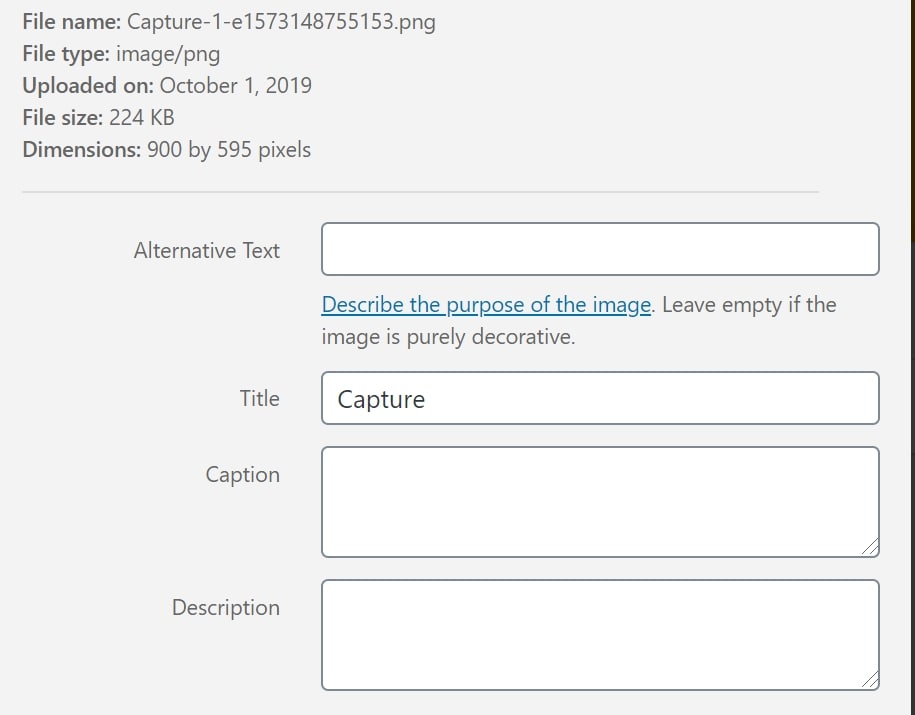
The alt tag is used for people with disabilities. It’s important to tell people who may not be able to see the image what it is. For an image of a person using a computer, you could use “Woman using computer for SEO research”, if that’s what the picture represented.
Using a keyword phrase in the image alt text can help boost ranking and it can also lead to more visibility in Google Images. The keyword phrase should make sense in the alt text, so in the above example, the keyword phrase is “SEO research”.
Internal Linking
Internal linking is the practice of linking one page to another one that provides more information about a topic.
For instance, if we had a page about “Website Design” and a blog post about “SEO Web Design“ (we have both by the way), we would want to link the two pages throughout using anchor text and hyperlinks (like the link we just did on the blog title) to each other to show relation and provide more info for both users and Google alike.
External Linking
Quality content is authoritative, and sometimes to show how much authority a page has a link to an external site may be needed to backup info presented.
For any facts, quotes, or statistics used in the content, a hyperlink should be inserted to where the information was derived. Not only does this give credit to the site providing the fact, quote or statistic, but it also shows Google how valuable the page is because it backs up the information provided.
Free Download: Local SEO 101 Ebook
Link Building
One of the most prominent factors in domain authority, link building, or backlinks, is the process of gathering external links from other high authority websites linking back to your website.
The more relevant external links a website has, the more Google sees that the site has authority in its industry. Authority leads to the website ranking higher.
Due to illegitimate link building practices in the past, Google has strict guidelines for building links to a website.
Google wants website owners to create high-quality content so that other websites will want to link to it. Despite Google’s desire for sites accumulating links in this way, website owners still try to persuade others for unearned links to their site or even purchase them, both of which may have consequences.
And while links are good, if all the links pointing to your website are from low-quality sources or other low-authority websites, it will have the unfortunate result of backfiring and therefore lowering your own ranking.
When link building, it’s important that external links come from high-quality, authoritative websites which are typically only earned when you produce high-quality content or create value to others in some sort of way.
Local SEO Factors
Local SEO is the practice of optimizing a site for local businesses. It follows all of the practices of general SEO but adds in local optimization to boost visibility in a specific area of the country making it more targeted. As a Rockford SEO company, our local focus would begin with Rockford, IL and expand outward from there.
Website Local SEO
We already talked about the importance of consistent NAP (name, address, phone number) for local businesses, but we didn’t mention the importance of using the city or town of the business in the title tag and page content.
This reinforces to Google that the site is offering a service in that area of the country, so when people in that area are searching for it, search engines know to present the site to them.
Citations for Local Businesses
Citations are similar to external links but are listings or directories that provide information about local businesses, such as local Chambers of Commerce. Many directories exist online, and the more businesses are listed in relevant ones to their industry, the higher they rank on SERPs.
The reason is that Google wants to ensure the local businesses they recommend to their users are legitimate. They also want to make sure the information they present to users is accurate.
Citations often include the following information:
- Name
- Address
- Phone Number
- Description of the business
- Reviews of the business
The same guidelines apply for citations as they do for external links. Citations should be on high-quality directories that are viewed by Google as providing good information to Internet users. Adding a listing to a low-quality directory will not help with rankings and could lead to penalization if there are too many created.
Google My Business
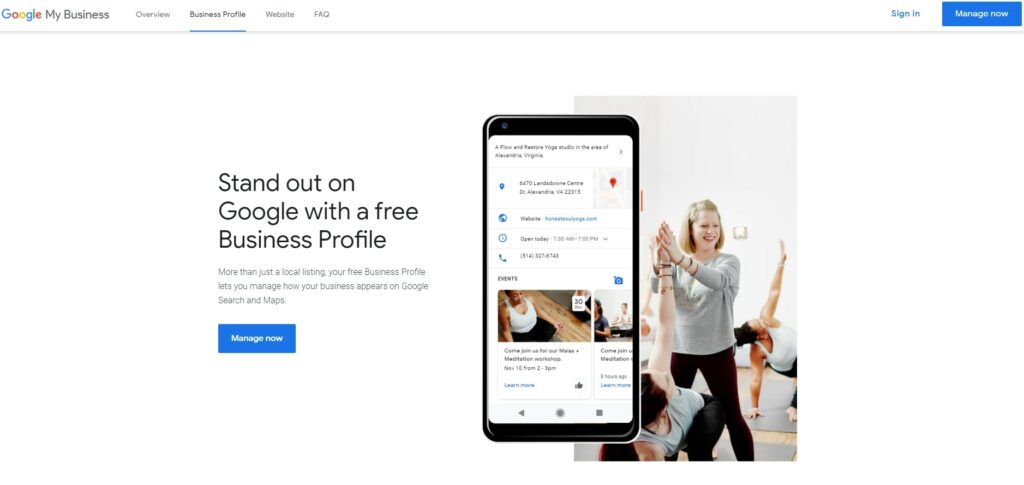
Google My Business is extremely important for local businesses. So important, in fact, that we created this Google My Business Optimization Checklist to make sure you’re getting the most out of your listing and it’s optimized to the fullest.
Google has created this platform to give local businesses more visibility on SERPs. For certain industries, more than 50% of their leads can come from their Google My Business page.
The listing should be verified, and the profile should be completed fully. This includes adding a list of services, products, and photos, and filling out all other relevant information.
A description of the business should be added which can give an overview of who your business is and it does.
Google My Business also allows local business owners to post to their profiles. It’s a good way to highlight promotions, events, and other important information. It can also simply be a way to showcase featured products or services.
Review Management
Ninety one percent of people read reviews online and 84% trust them as much as they trust their friends. Reviews are highly influential in whether a consumer decides to buy a product or pay for a service, so it’s important to manage them effectively.
Encouraging customers to leave reviews is always a good idea. Local businesses depend on them and so do potential customers. Focus on the most important review channels since your Google My Business listing may display reviews from other sources as well.

Not every review is going to be a good one, though. Unfortunately, many customers won’t leave a review unless it’s a bad one. Regardless, it’s important as a business owner to respond to all reviews left for your business.
Positive reviews should be answered by thanking the person for taking the time to share the experience. This shows consumers the business owner cares and is available online. Negative reviews should be answered in a way that doesn’t provoke further disappointment.
Acknowledging the negative experience and then requesting that the person contact the office at the earliest convenience is a good way to show that a resolution is possible. It also shows potential consumers that the business wants to make it right with the unhappy customer.
Review management can be an overwhelming task, especially for busy business owners. It’s one of the most important tasks to do online though because of its impact on people’s perception of the business, especially in local settings.
Invest In Success
SEO is an investment in your business’s success online. It can be a slow ongoing process by which returns are produced through continued growth of the site.
While many give up their SEO efforts or don’t invest fully, the ones that do will typically see long-term success, growth, and profits by always having their business show up ahead of the ones that give up or don’t fully invest.
As more valuable content is generated for the website to provide the targeted audience the information they need, leads and sales grow.
Search engines share similar algorithms. While Google is the most popular, proper SEO will not only help you rank higher in Google, but you should expect increased rankings for Bing and Yahoo as well.
Our Spring Hill SEO specialists know how to develop optimized websites to meet the needs and desires of Internet users, as well as those of search engines. We offer a full suite of managed SEO services as well as in depth digital marketing and web design services to maximize your digital impact and success.
At BrandDad Digital, we’ll ensure a website meets and exceeds the expectations of a user by ensuring it’s fast, attractive, seo-friendly, built to convert, and user-friendly on any device they are using.
We make sure to only follow Google’s best practices when it comes to optimizing pages, generating content, and building links and citations for local businesses.
All of these tasks require comprehensive knowledge and continuous work to be done properly but with our help you’ll be able to simply sit back and watch as your business climbs the Google rankings.
Get a free consultation today to discuss how we can help grow your business.








